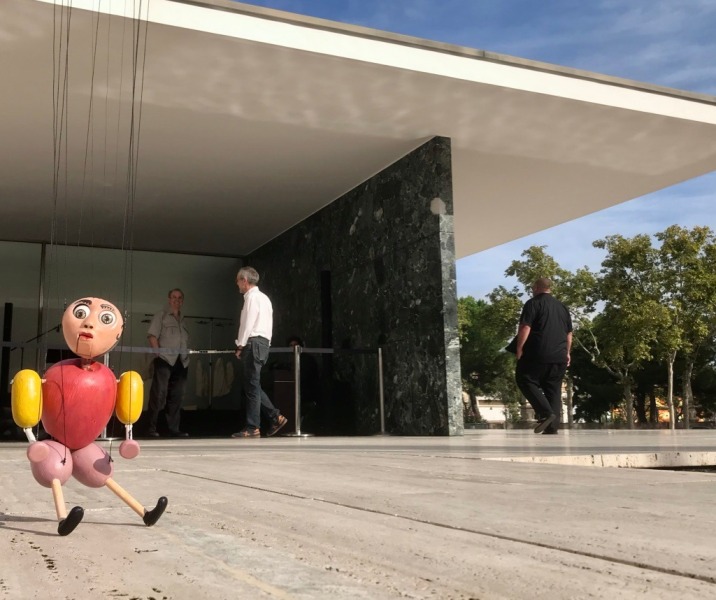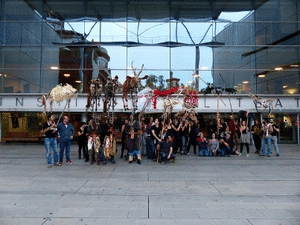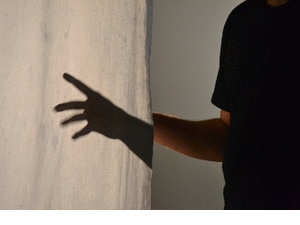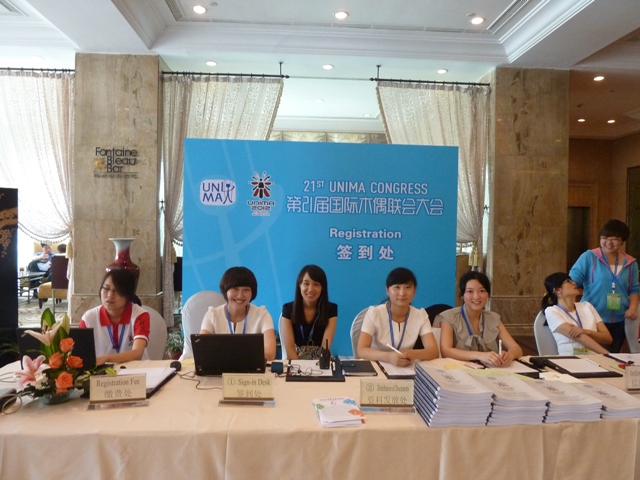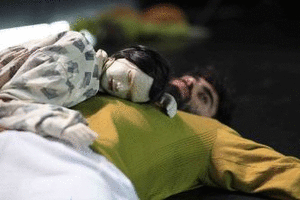(The Litlle Hanchback at the Mies Van der Rohe Pavilion. Photo by Christian Fuchs)
Last autumn during Barcelona’s Mercè Festival 2019, three performances were given (21, 22 September) of a unique and most unusual puppet show featuring Bauhaus marionettes. The original marionettes were created in 1923 by the students of a workshop directed by Oskar Schlemmer. The faithful reproductions are worked by Christian Fuchs, a puppeteer from Weimar, who is also the dramaturg and director of the show.
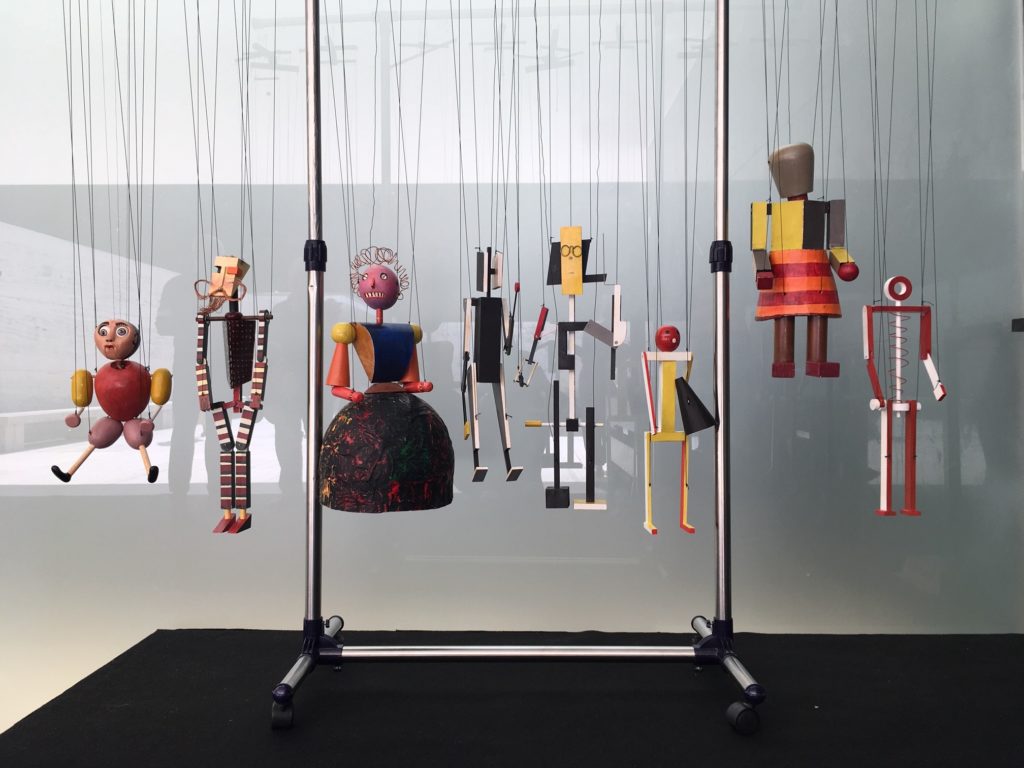
These marionettes are true gems, perfect examples of the aesthetic ideals of the Bauhaus and of the principal driver of the movement’s inspiration, artist Oskar Schlemmer. Having been given form during the above-mentioned workshop, they were neither used in performance nor provided with strings. They had to wait until 2015 for the puppeteer Peter Lutzes to present them on stage; although, following their brief appearance, they were put straight back into their boxes.
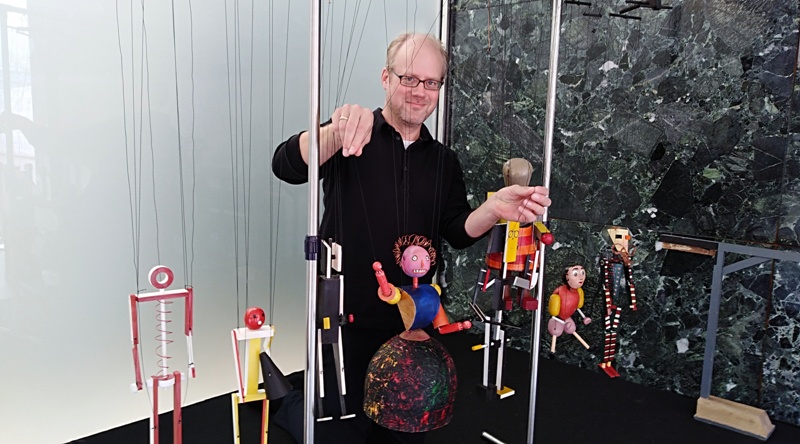
It was only recently, some 95 years after their creation, that Christian Fuchs sought permission to perform with them. Given his conceptual vision for the show and successful dramaturgy, we can predict that they will enjoy a long life.
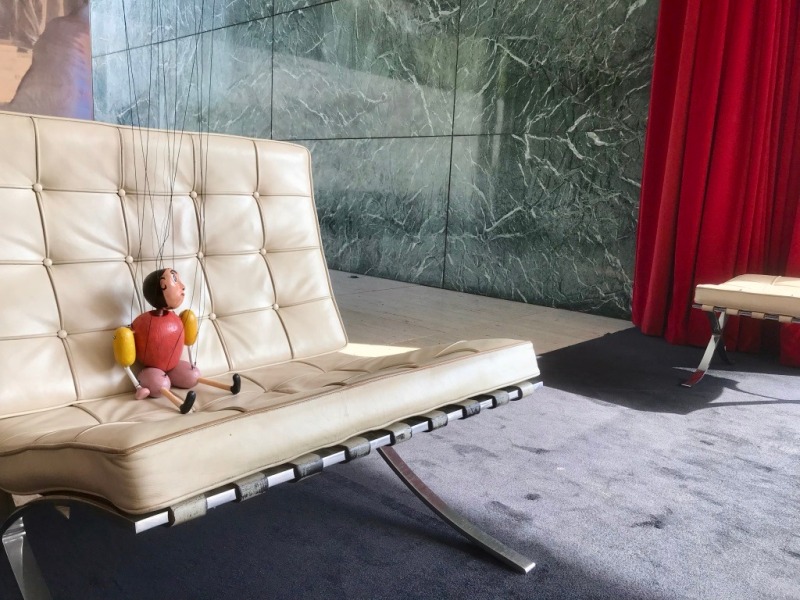
And where better to see them perform in Barcelona than at the Mies van de Rohe Pavillion, on the esplanade of the Montjuic Fountain? The Pavilion is a kind of temple dedicated to the aesthetics of its creators, the architects Ludwig Mies van de Rohe and Lilly Reich, both exponents of the Bauhaus aesthetic. As part of the programme of acts to celebrate the centenary of this legendary artistic school, founded in 1919, the head of the Mies van de Rohe Pavilion decided to invite this veritable delight, a treat for those who enjoy such things, to perform during the Mercè Festival.
Avant-garde and Tradition, through the eyes of the Bauhaus.
What is so interesting about these marionettes created by Oskar Schlemmer’s students, is that they embody characters inspired by traditional German puppet theatre, whose central figure was the famous Kasperl or Kaspar, but subjected to the synthetic and geometric vision of the Bauhaus – a vision that has provided us with that perfectly coined expression, “Less is more”, visible today even on the T-shirts of the young.

This work, called ‘The Little Hunchback’, is a playful, indirect reference to that big hunchback Kasperl, along with the majority of European popular puppet heroes (Punch, Polichinelle, Don Cristobal Polichinela, Petrushka, and others). The figure is stylised because, while sporting a certain grotesque air, the puppet in this case is a cute round hunchback, reduced to a play of simple forms based on the sphere, in keeping with the search for formal essence of the period.
Hunchbacks in puppet theatre have always been presented as laughing at serious professions and those in power. And this is what Schlemmer’s students did with the other puppet characters in the piece, too: the tailor, his wife (grotesque character in line with the cruellest Pulcinella aesthetic), the Doctor, his Servant, the Oil Merchant, the Town Crier/policeman and the Hangman.
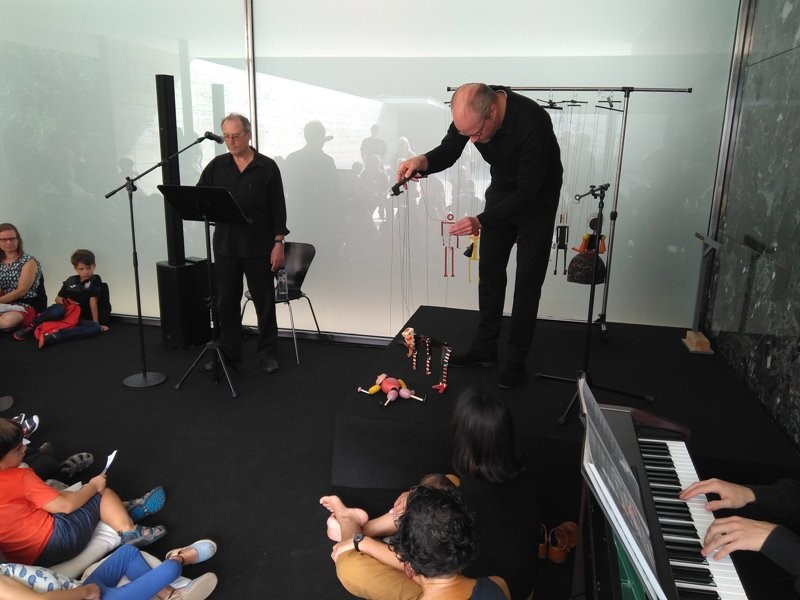
But what is particularly attractive in Christian Fuchs’s version is that, rather than the knock-about, rowdy style of traditional puppets (which would, furthermore, be impossible with string marionettes), he opts for a delicate and subtle staging inspired by the language of silent film, accompanied appropriately by a pianist and by a narrator who sets each scene in advance in short, succinct sentences.
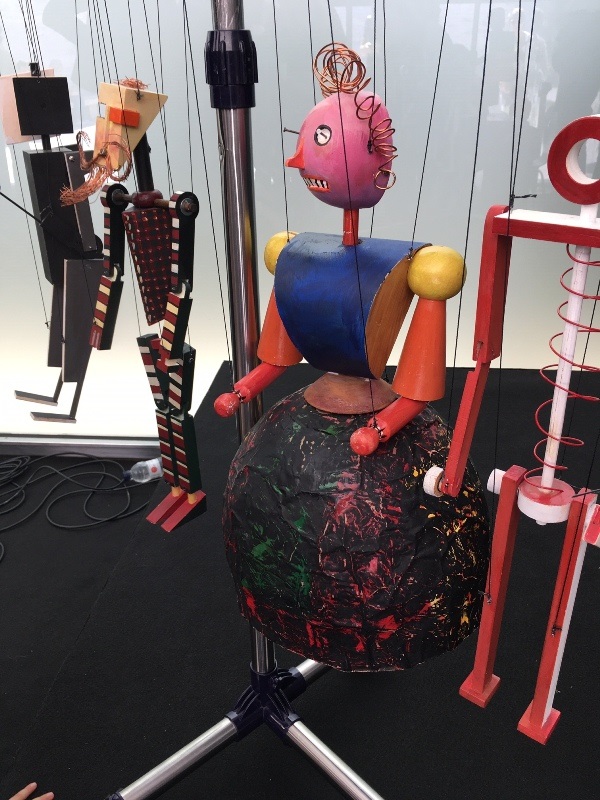
The music comprises fragments from various works by Paul Hindemith (1895-1963), a contemporary of the Bauhaus, which fits perfectly the combination of cabaret, puppetry and silent film that the director sought. For the performance in Barcelona, the young pianist Blai Manyer (student at the Royal Conservatoire of Scotland) performed Hindemith’s demanding scores to excellent effect. As for the narrator, the writer of these lines was charged with voicing the short texts of the show.
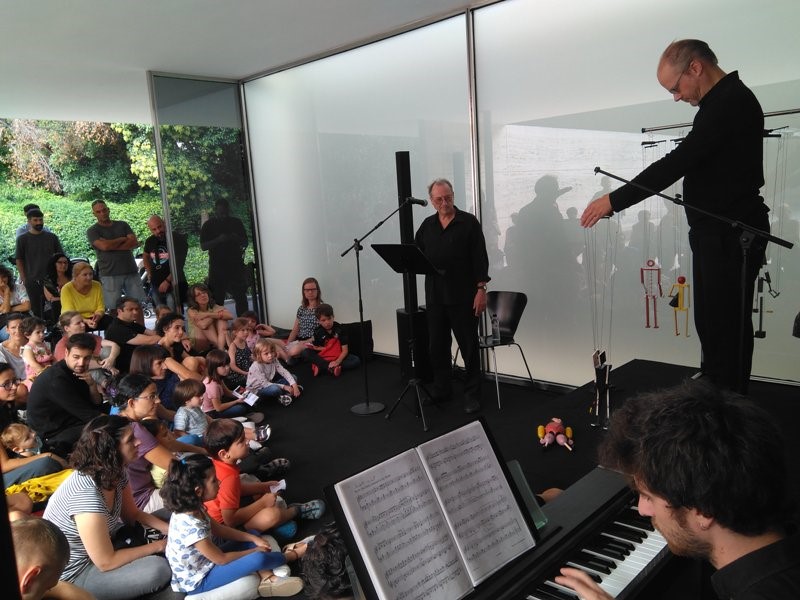
Christian Fuchs’s theatrical solution, which ties in perfectly with the simplicity and concision both of the marionettes and of the story, allows the archetypal depth of the situations to emerge, as the puppets perform with a kind of precise mimicry during the musical moments; situations that, despite their clownish character, are nevertheless scenes that speak about life and death, guilt, innocence and punishment.
This was evident during the three performances given at the Mies van der Rohe, sheltered from the rain in the exterior/interior of the Pavilion, where the faces of a fully engaged audience gave eloquent expression to this double or triple reading offered by the production, combining humour, aesthetics, music and theatre, in a catharsis of intelligent irony that is not always easy to achieve.
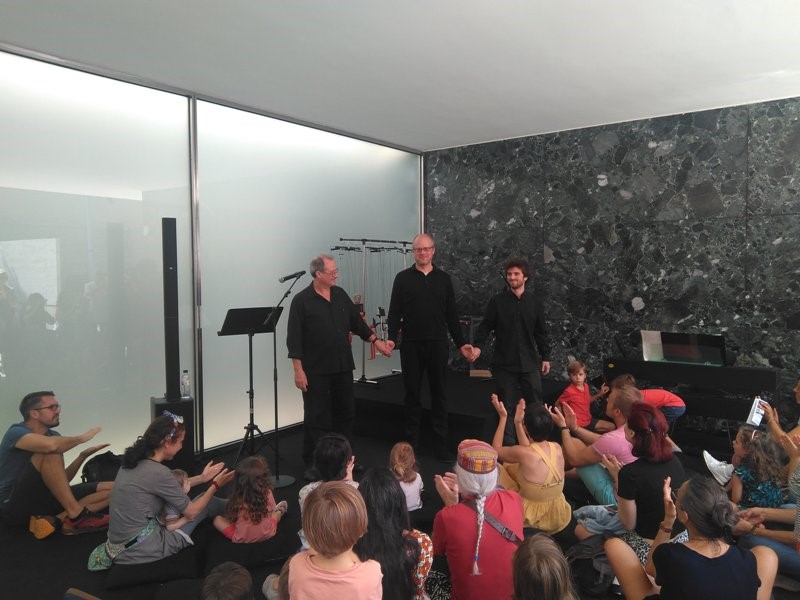
The performance was received with great enthusiasm and at the end of the show adults and children approached the marionettes to see them up close and take the requisite photographs.
Let us at Puppetring do the same, lining up the eight marionette characters from the show:
The Characters
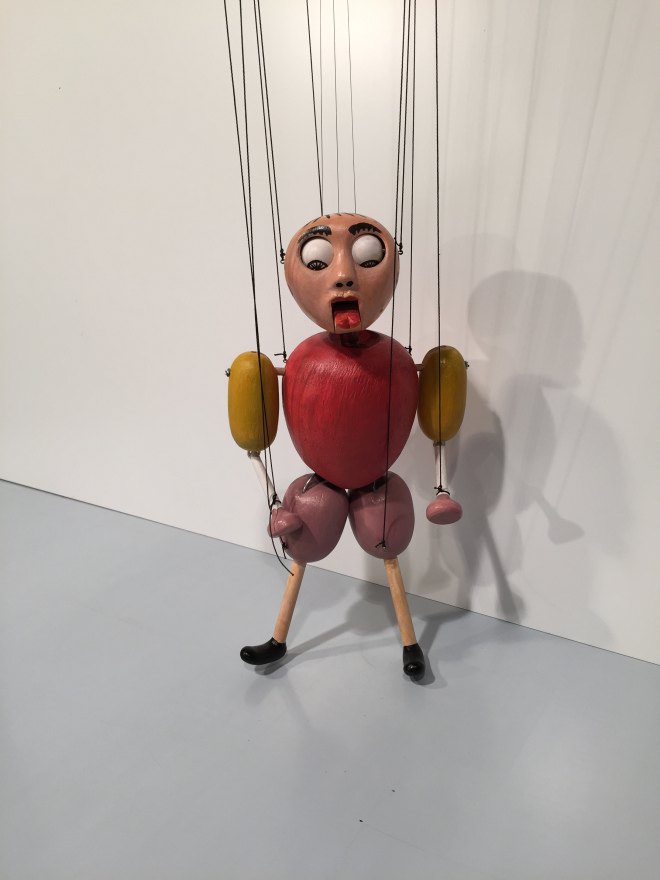
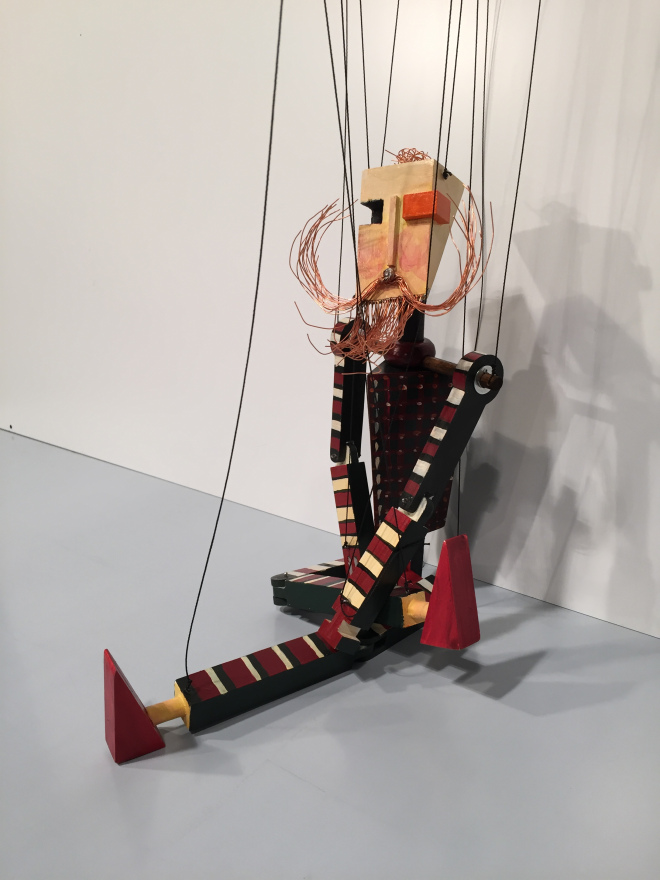
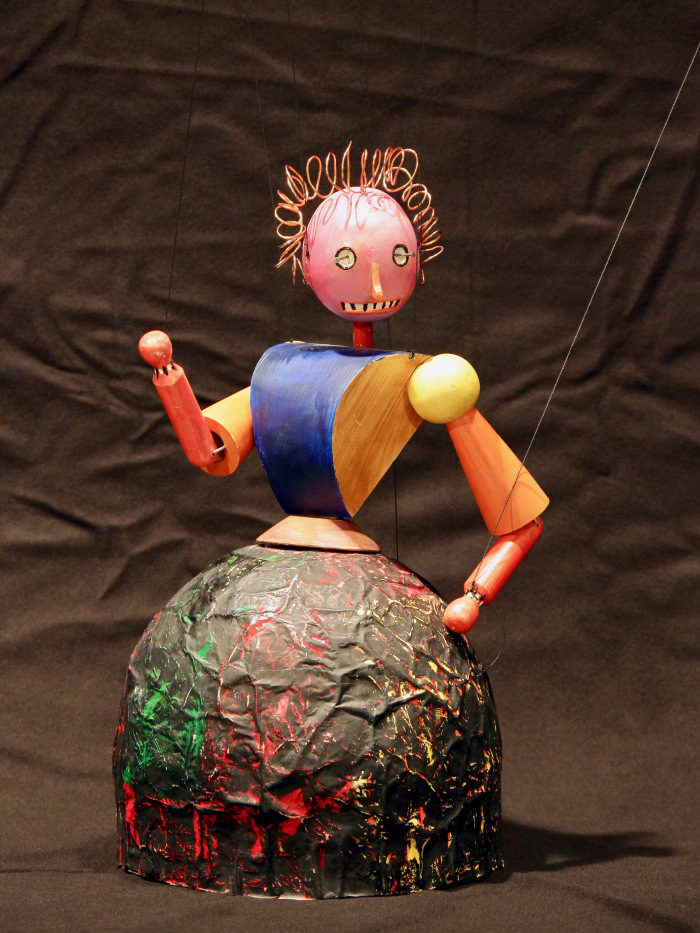
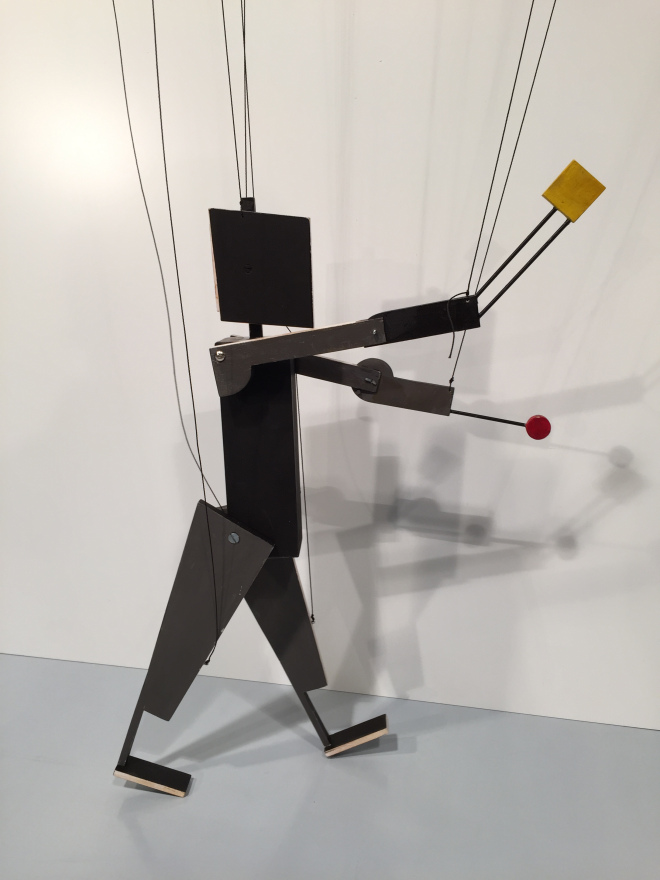
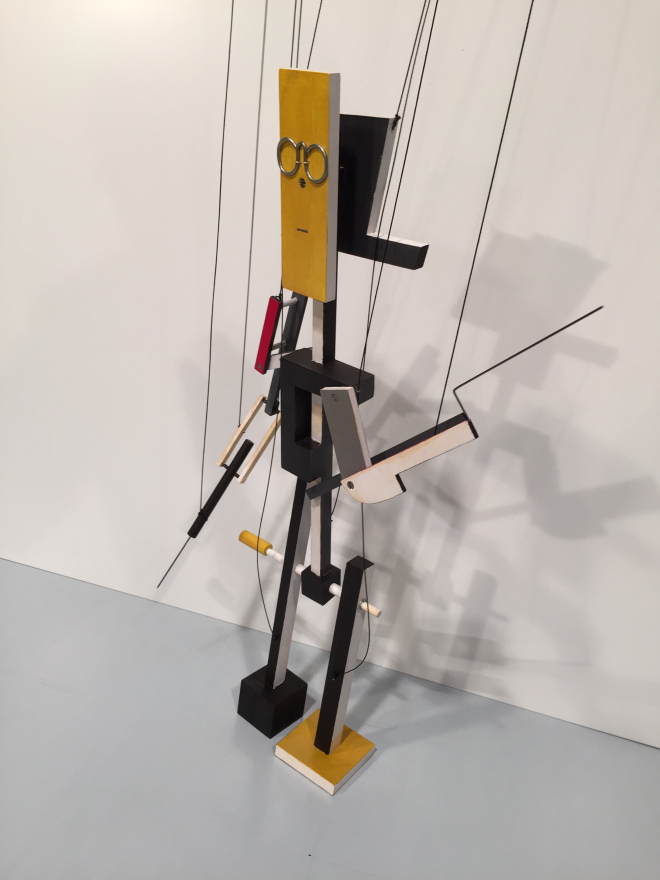
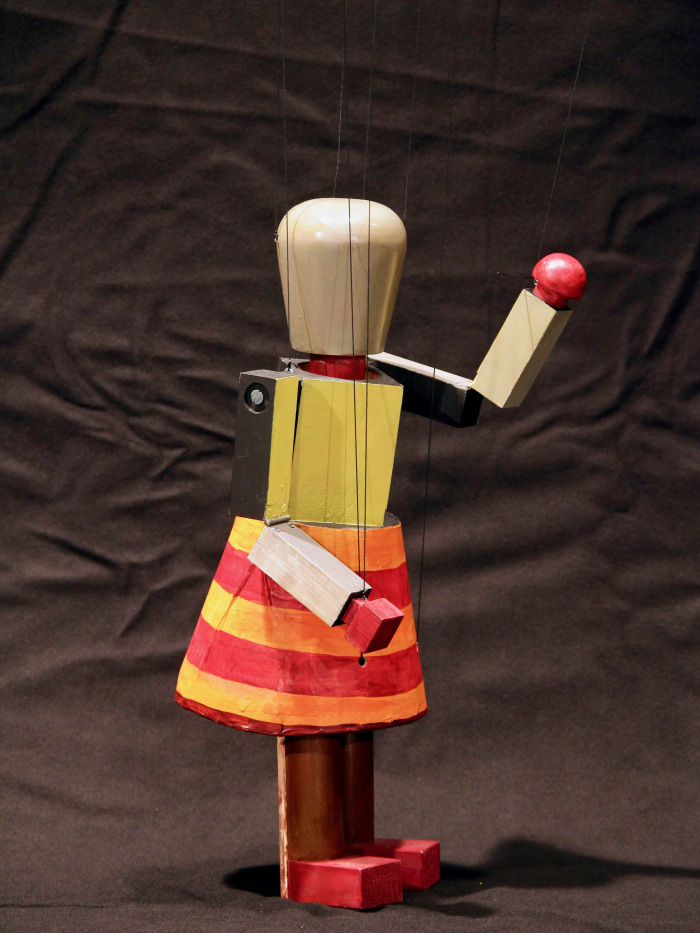
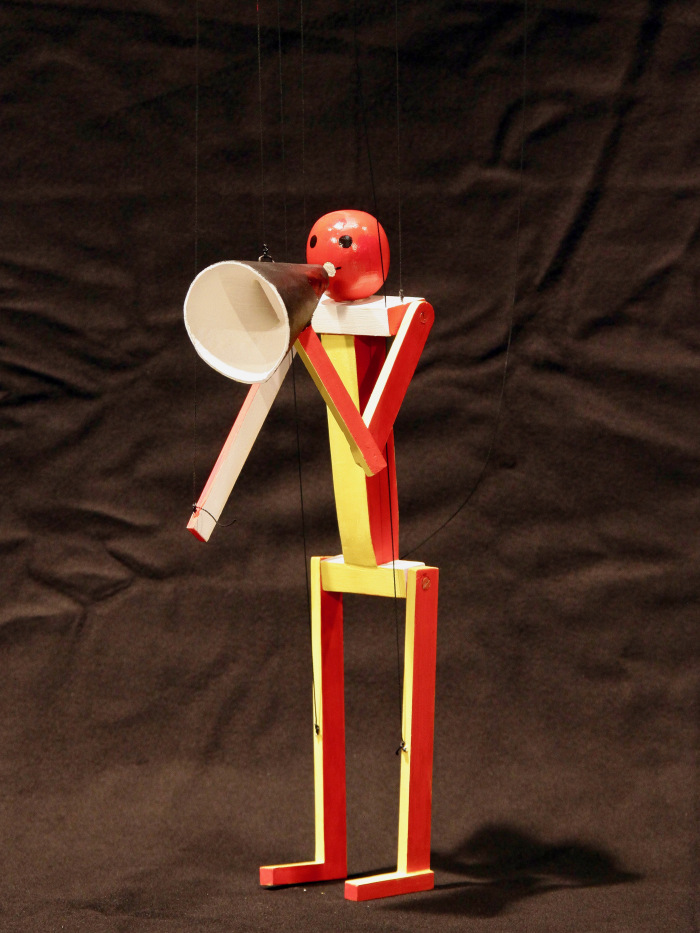
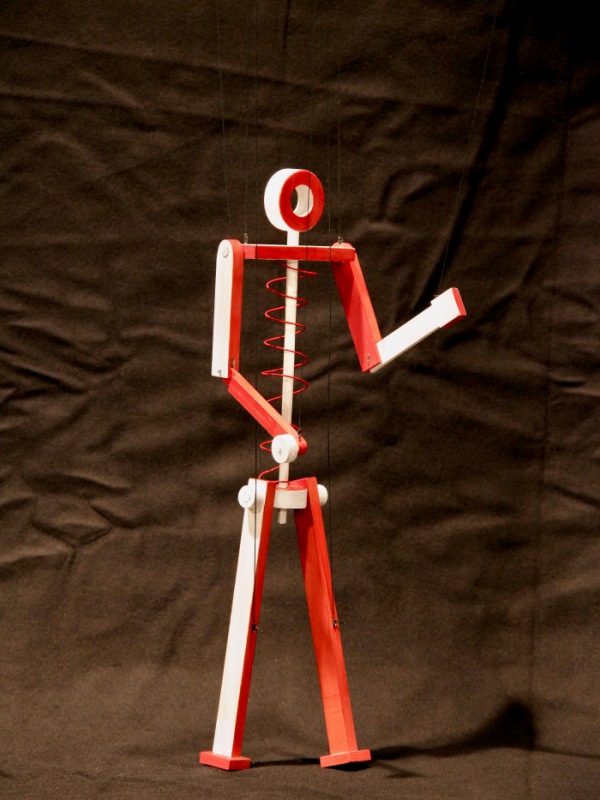
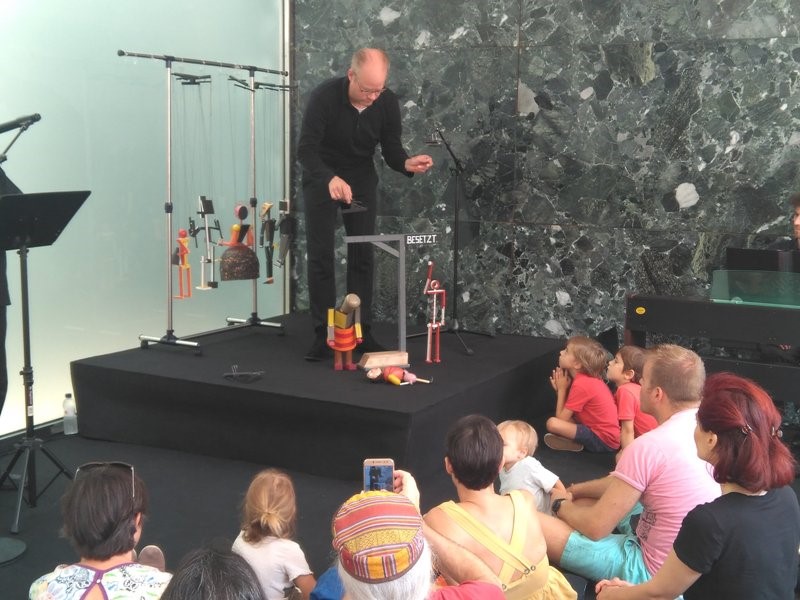
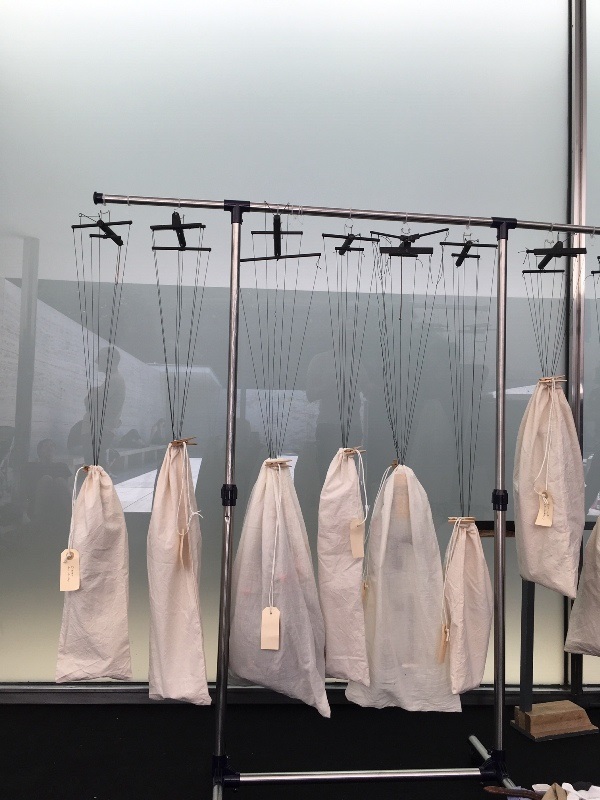
Translated by Rebecca Simpson.

